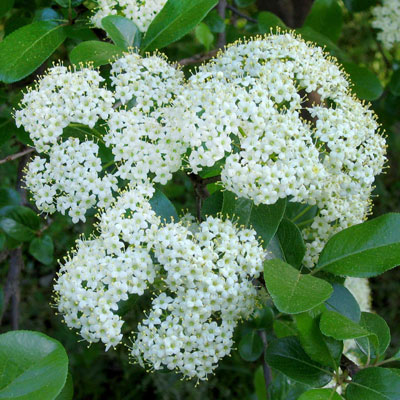Rusty Blackhaw Viburnum

This is a plant that is more than happy to call Texas its home. It adapts well to a wide range of soils. It handles our heat, and it stands up to our winters as well. Simply put, rusty blackhaw viburnum ought to be showcased in a lot more landscapes than it currently is.
Let’s look at the facts…
• Common name: Rusty blackhaw viburnum
• Scientific name: Viburnum rufidulum (in the Adoxaceae plant family)
• Native range: Southeastern U.S. west into East and Central Texas
• Mature size: 16-20 ft. tall and 14-16 ft. wide.
• Lighting preference: suited to sun or mostly shade.

• Flowers: March in South and Central Texas, early April in North Central and Northeast Texas. Clusters of small white blossoms are popular with honeybees, butterflies, and gardeners.

• Leaves: Deciduous, 3 to 3-1/2 in., deep and glossy green in growing season, turning coppery shades in fall.
• Fruit: late in season steel-blue fleshy fruits are cloaked in a gray matte coating. Birds and mammals are quite fond of the fruit.

• Bark: develops rectangular fissures for wonderful textures.
• Soil preferences: adapts well to a wide range of soils, from clays to sands, as long as the soil drains well. Does well when organic matter content is high.
Note: Rusty blackhaw viburnum is not widely available in mainstream nurseries. You’re more likely to find it in nurseries that showcase native Texas plants. Annual sales of the Texas Native Plant Society chapters and local Master Gardener chapters are also likely to have it. When you find it, do grab it. If you pass it by you may kick yourself later, and that’s a tough injury to overcome.
